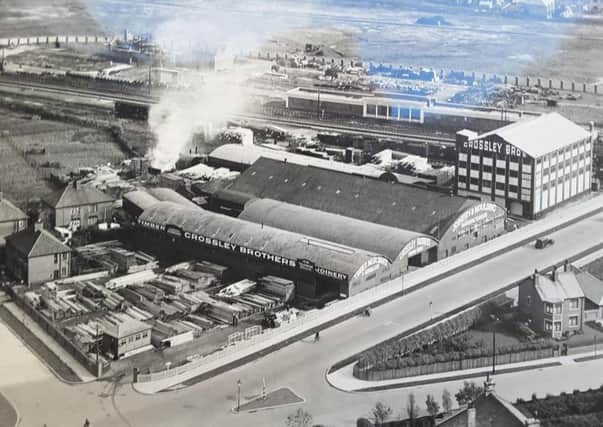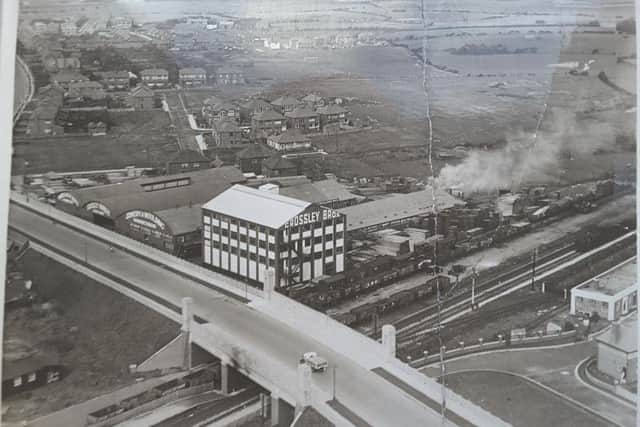Bridging a generational gap


Said to have been taken in 1933 or 1934, shortly after the old bridge was built, these black and white photographs show how it was once over-looked by several huge buildings belonging to Crossley Brothers.
They reveal how the timber firm’s sprawling estate, based where Poundstretcher and Pets At Home are now, was a prominent feature in the area, with the large white ‘Crossley Bros’ lettering hard to miss.
Advertisement
Hide AdAdvertisement
Hide AdPeter Crossley said the bridge, which re-opened earlier this month after being demolished and rebuilt in a £6.1m project, was partially built on land owned by his ancestors.


He sent The Gazette these two fascinating snapshots of a bygone era, which have been kept in his family’s archive ever since they were taken from the air more than 80 years ago, and demonstrate just how much the area has changed.
Back then there were no traffic lights at the bottom of Warbreck Hill Road – because there were hardly any cars on the road – while what is now Mowbray Drive, a thriving hub of industry, was nothing more than spare land.
Many of the residential streets behind Bispham Road, including Salmesbury Avenue, don’t appear to have been built yet, with field after field stretching into the horizon towards where built-up Bispham is now.
Advertisement
Hide AdAdvertisement
Hide AdAnd the spot where shoppers now leave their cars while nipping into Pets At Home for a pig’s ear was once occupied by huge piles of wood, with dozens of carriages standing by to transport timber across the country by train from Layton station.